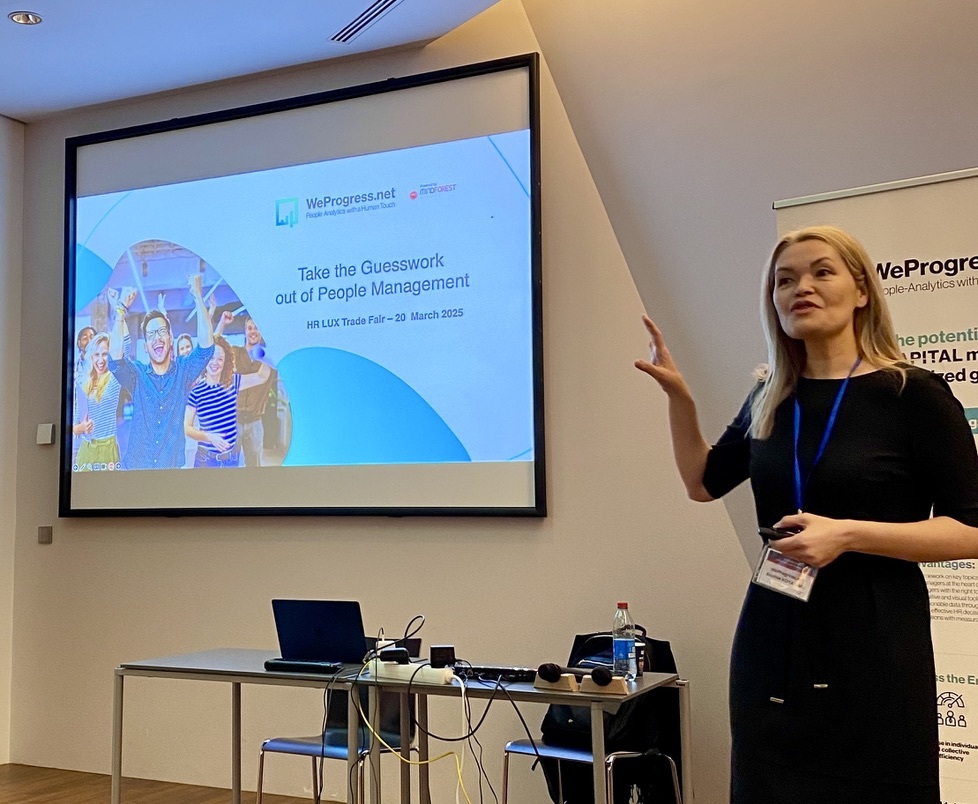Change 101: what is Change Management?
“Change is no longer a rare and overwhelming event, but a daily reality”
Aurélie Poncelet, Change management consultant
Reasons for changing
In a world of constant change, there is a growing awareness that the only way to adjust permanently to the environment is to develop the ability to change, to learn from mistakes and to question oneself.
Change is induced when there is a discrepancy between the current state of a situation and the one we would like to see as a future state of the company.
There are a number of reasons for change:
What is change?
Change can take many different forms, it is always linked to an internal or external context, which requires a review of one’s way of working or living. It is expressed by in action for example by a change in behaviour and ways of working, but it is not limited to learning new methods, because it includes a strong emotional dimension that must be taken into consideration.
What is change management?
Change management is a holistic, cyclical and structured approach transitioning individuals, groups and organisations from a current state to a future desired state with the expected business benefits. It helps organisations to integrate and align people, processes, structures, culture and strategy within the business[1].
Why is change management so important?
Not accompanying employees during a change may have an impact at different levels.
At employee level, they may feel lost, lose faith in their employers, have a feeling of injustice, their level of job satisfaction may decrease, such employees will become less involved in the project and may lose their sense of belonging and commitment to the organisation.
At project level, there is a risk of overrunning the budget and not meeting deadlines. If requirements are not properly addressed at the outset, there is a risk that additional work will be required, resulting in loss of time for the project team.
At company level, absenteeism may increase as well as presenteeism, there may be a fall in productivity, turnover may increase and there is an increased risk of losing key employees. Quality levels could also decrease, with an inevitable impact on profits, customers and/or suppliers.
And the ultimate risk is that the project does not succeed. According to Jang[2], almost 68% of all transformation projects never reach their objectives because of hidden costs. Besides the lost investment in the project, there is also the expense of a lost opportunity. In the meantime, other projects could have been realised!
Studies also show that a well-supported change will achieve or exceed its objectives 6 times more than a poorly supported change[3].
Are you still not convinced of the need for support with your next change project?
To minimise the risks in a change project, several factors are essential to ensure its success.
The key stakeholders
Every project needs a pilot! To achieve this, you need to set up a change team which will steer the change, by taking strategic decisions, making the necessary trade-offs and ensuring the strategic alignment of the project.
In the change organisation, the team in charge of change management will play an essential role; it will manage the changes by designing, implementing and making available the support plans that will enable users to be prepared for and accompanied through the change.
Closer to the teams, the role of line managers, HR and COM will be to support the changes by communicating, implementing and monitoring the change.
Line managers play a particularly important and difficult role. On the one hand, they are dealing with change at a personal level, and on the other hand, they are asked to act as a relay between management and the employees on the ground.
Setting up a network of ambassadors will help to make the change understood by facilitating understanding of the project and passing on information about the most important points.
- [Some advice] consider each stakeholder as a key element to the success of the change project by making them feel essential to its success, in this way they will want to become involved.
Some levers of change management
In order to ensure the change is successful, it is essential to rely on different levers.
Communication is an important lever that must be used throughout the change project. It will give substance and meaning to the change, reduce uncertainties and limit the risks of misinterpretation.
Involvement will ensure that employees are committed to the change and will make it possible to make adjustments based on their feedback and thus enable employees to be associated with the success of the change by taking an active part in it.
Documentation will confirm the description of the new operating principles while also formalising best practices, thus providing users with new reference material.
Training will facilitate the adaptation of employees by developing the skills needed for change and by reducing the resistance and minimising any difficulties they may encounter with this change.
Coaching/tutoring constitute important levers to maintain momentum by accompanying employees through the change with the aim of facilitating their support of the project.
Would you like to dig deeper in this topic?
Why not take a look at our White Paper dedicated to the topics of culture and change management.
- MF Essentials・Culture & Change Management [+]
Let us help you!
WANT TO RECEIVE OUR LATEST THOUGHT LEADERSHIP CONTENT?
Related posts
 Take the Guesswork out of People Management
Take the Guesswork out of People Management
 From processes to people: achieving quality
From processes to people: achieving quality
 Daring to lead Positive Transformation: What if Positive Emotional Capital was your key to sustainable change?
Daring to lead Positive Transformation: What if Positive Emotional Capital was your key to sustainable change?
 Why hire Change management professionals? We can do it alone!
Why hire Change management professionals? We can do it alone!
 Digital Transformation and Change Management: Lessons shared in an event hosted by Cebi and MindForest
Digital Transformation and Change Management: Lessons shared in an event hosted by Cebi and MindForest



